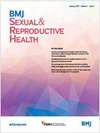遏制伊朗公共资助的计划生育服务:谁受到影响?
Q Medicine
Journal of Family Planning and Reproductive Health Care
Pub Date : 2016-12-22
DOI:10.1136/jfprhc-2015-101383
引用次数: 15
摘要
为了应对该国持续的低生育率,伊朗最高领导人在2012年呼吁转向生育主义人口政策。因此,伊朗议会提出了一项法案,以限制提供避孕知识和服务,作为提高该国低生育率的解决方案。这项研究旨在调查,如果提供有补贴的避孕方法(如绝育、宫内节育器和注射)受到限制,哪些妇女群体将受到不利影响。方法本研究利用2014年德黑兰生育调查(n=3012)的最新数据,对3012名有代表性的已婚育龄妇女进行了调查,并使用多项logistic回归分析,以确定使用政府资助避孕方法的可能性较高的妇女。结果目前德黑兰82%的已婚妇女使用避孕方法。长效避孕措施,即绝育和宫内节育器的使用率从2000年的34%下降到2014年的20%,同期男性避孕方法(退出和使用避孕套)的使用率从33%上升到55%。多因素结果显示,生育数量多、不想再生育、生活在贫困地区、受教育程度低的妇女更倾向于使用长效避孕方法,而不是退出和避孕套。结论社会经济地位较低的妇女在公共计划生育服务受到抑制的情况下是最弱势的群体。本文章由计算机程序翻译,如有差异,请以英文原文为准。
Curbing publicly-funded family planning services in Iran: who is affected?
Objective In response to a persistent low fertility rate in the country, the Supreme Leader of Iran in 2012 called for the shift to pronatalist population policies. Consequently, Iran's Parliament proposed a bill to curb the provision of contraceptive knowledge and services as a solution to raising the country's low fertility rate. This study aimed to investigate which groups of women will be adversely affected if the provision of subsidised contraceptive methods [i.e. sterilisation, intrauterine device (IUD) and injections] is curbed. Methods This study used recent data from the 2014 Tehran Survey of Fertility (n=3012) conducted among a representative sample of 3012 married women of reproductive age, and used multinomial logistic regression analysis to identify women with a higher likelihood of using government-funded contraceptive methods. Results Currently 82% of married women living in Tehran use a contraceptive method. The use of long-acting contraception, namely sterilisation and IUDs, declined from 34% in 2000 to 20% in 2014, and the prevalence of male methods (withdrawal and condoms) increased from 33% to 55% in the same period. Multivariate results showed that women who have a large number of children, want no more children, live in poor districts, and have low education are more likely to use long-acting contraceptive methods than withdrawal and condoms. Conclusions Women of low socioeconomic status who want to stop childbearing are the most vulnerable subgroups of the population if the publicly-funded family planning services are curbed.
求助全文
通过发布文献求助,成功后即可免费获取论文全文。
去求助
来源期刊

Journal of Family Planning and Reproductive Health Care
OBSTETRICS & GYNECOLOGY-
CiteScore
0.84
自引率
0.00%
发文量
0
审稿时长
>12 weeks
期刊介绍:
The trading of Professional, Managerial & Healthcare Publications Ltd has been transferred to its parent company, Keyways Publishing Ltd.
 求助内容:
求助内容: 应助结果提醒方式:
应助结果提醒方式:


